Topics
We organise our actions in six thematic & strategic agendas:
Strategic Agendas:
Bio-economy
Circular Construction
Chemicals/Plastics
Manufacturing Industry
Food Chain
Water Cycles
Seven leverages provide additional support:
Leverage effects:
Lever Policy Instruments
Lever Circular Procurement
Lever Communication
Lever Innovation & Entrepreneurship
Lever Financing
Lever Jobs & Skills
Lever Research
What, why and how?
Why are we pursuing a circular economy?
Future visions 2050
How do we see our circular future?
About our management
Who steers what at Flanders Circular?
Linear versus circular
Linear economy
In a traditional linear approach, we take raw materials and make a product from them. As soon as the product has been sold, the gross value of the products falls (the functionality of the materials decreases). This can even be to such an extent that they are given a negative value: you have to pay to get rid of them.
Circular economy
Numerous strategies are applied within a circular economy in order to continue to use materials and products in the economy in the most valuable way. They are repaired, have a high second-hand value, are upgradeable, can easily be disassembled and turned into new products, the materials are fully recyclable or biodegradable, etc.
The graphic below shows that the value / functionality of materials increases throughout the production process, to the point of sale. Then a steep decline follows.
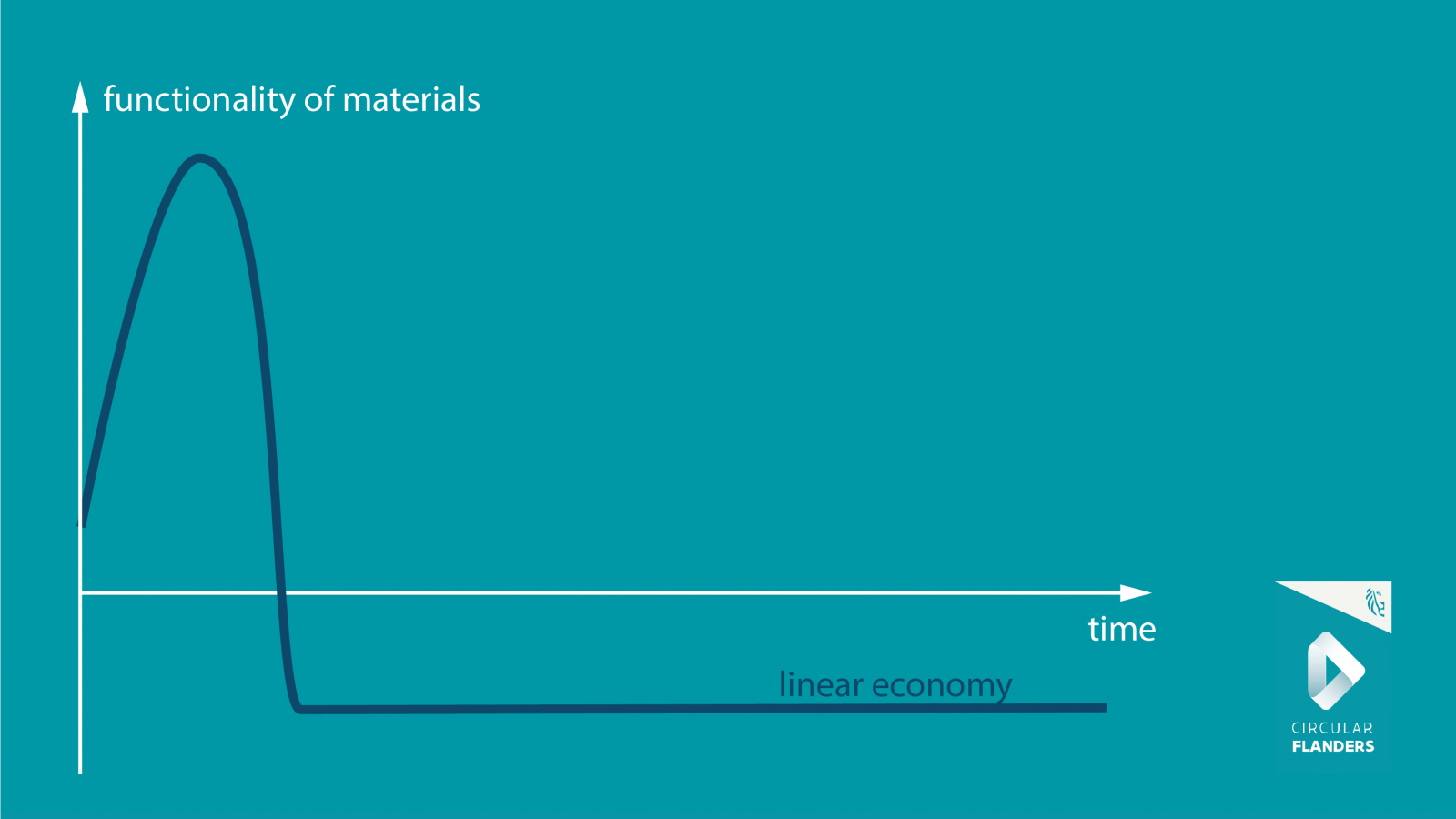
The graphic below shows that the value / functionality of materials is, even after the initial sale, returns again and again to a high level.
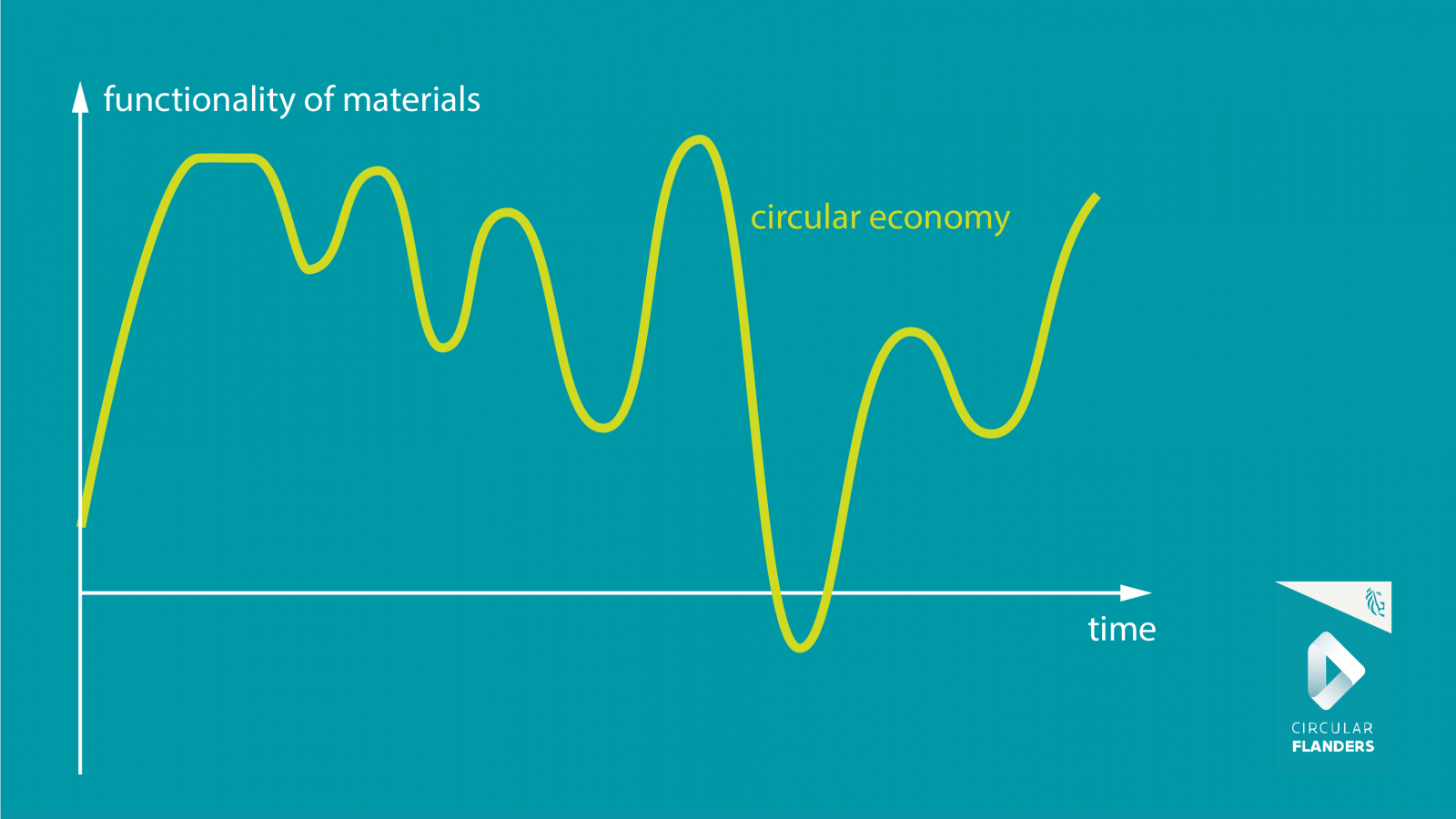
The link with the bio-based economy
The bio-based economy is the part of the wider bio-economy in which bio-based products are made. This may involve bio-based activities in chemistry, the textile industry, the pharmaceutical industry, wood processing, the construction sector, etc. The production of food and animal feed form part of the bio-economy, but not the bio-based economy.
The bio-based economy refers to the transition from an economy running on fossil resources to an economy running on biomass as raw material: from ‘fossil-based’ to ‘bio-based’. Examples of applications include filler substances, chemicals, materials, fuels, electricity, and heat. The intelligent use of biomass (cascading) is of importance here (Source: Bio-Based Economy). In this respect, the bio-based economy nicely complements the circular economy: both are endeavours for maximum value retention of raw materials.
.jpg)
A diagram of the cascade of value retention for biomass (vegetable and animal material) is shown below. At the heart of the matter is the question: how can we get the most value out of biomass use in our economy? The prevention of (food) losses and use for human food are the best avenues to this end. If you also look at it from an economic perspective (that indeed provides the highest added value), fine chemicals (= niche products in small volumes) and pharmaceuticals from biomass also hold a prominent place. Landfilling is the least desirable option.
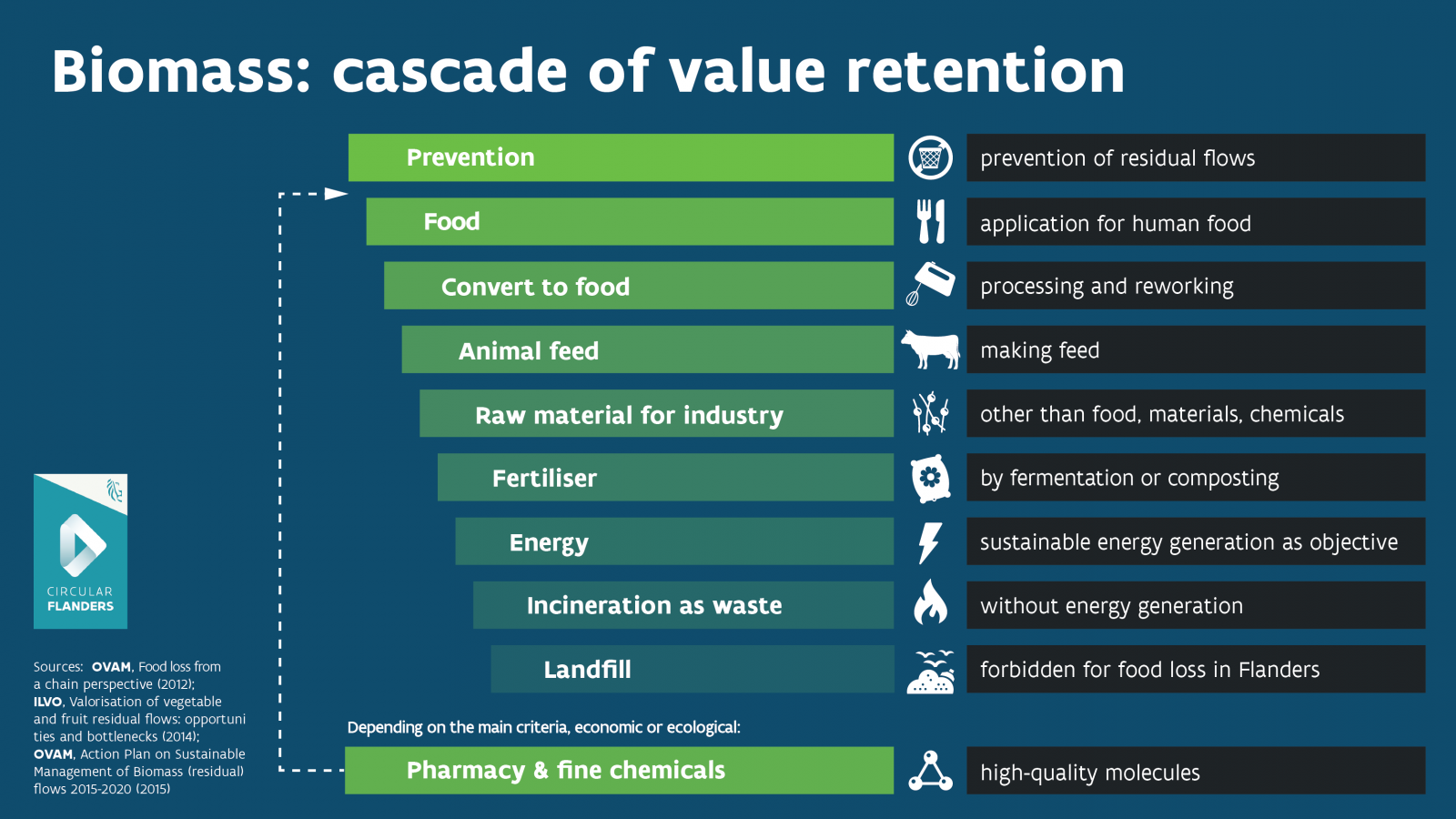
In scheme
When you combine both cascades (bio-based and technical), you come to the circular economy model below (inspired by Ellen MacArthur Foundation):
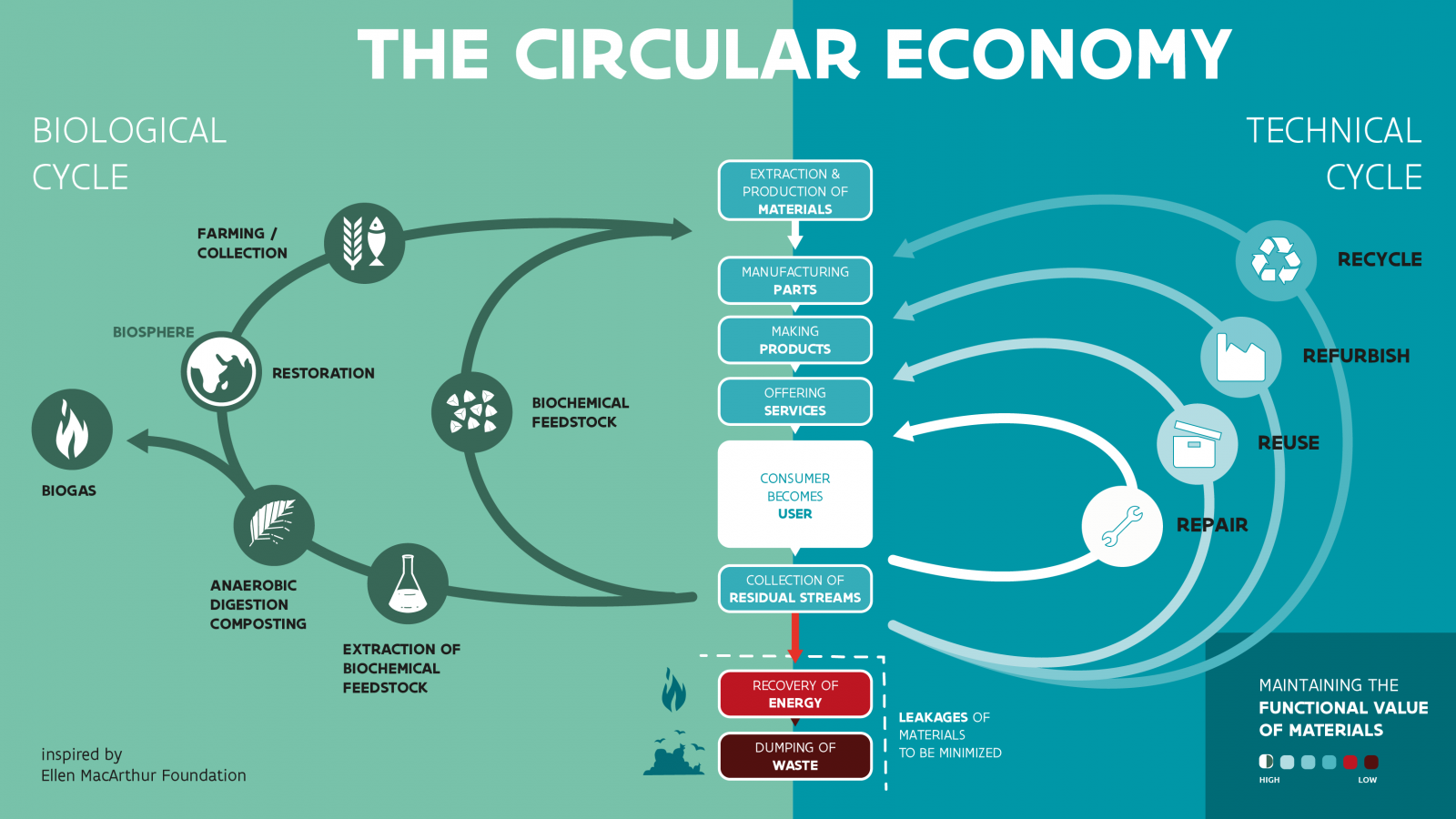
The link with the sharing economy
Use above ownership
The circular economy has a special place for the sharing economy, or more generally ‘use above ownership’. The idea that we do not always have to buy all the things we use ourselves can indeed contribute to a more circular economy. Indeed, many goods that we buy – a drill for example – spend most of their lives sitting in a cupboard unused. This is a waste of money and a waste of the energy and raw materials invested to make the products. So why not buy one drill and share it with others? This idea is often expressed in witticisms such as “What I want is the hole, not the drill” or “I want to fly, not buy the aircraft”, or “I want light, not the lamp”. We would then potentially save money and raw materials. There is potential in any case, but the whole issue of environmental impact is obviously a complex one: there are, for example, the so-called rebound effects (consumption increases due to lower costs of sharing) and moral hazard (the user takes less care because of the move away from ownership). Good preconditions and analyses are essential.
Hieronder tonen we het voorbeeld van de auto: doorheen zijn leven wordt een (niet-gedeelde) auto verbluffend weinig nuttig ingezet. 96% van de tijd staat hij geparkeerd. Van de tijd die hij wel rijdt, doet hij slechts 2,6% van de tijd waarvoor hij echt op de baan moet zijn: mensen van A naar B brengen.
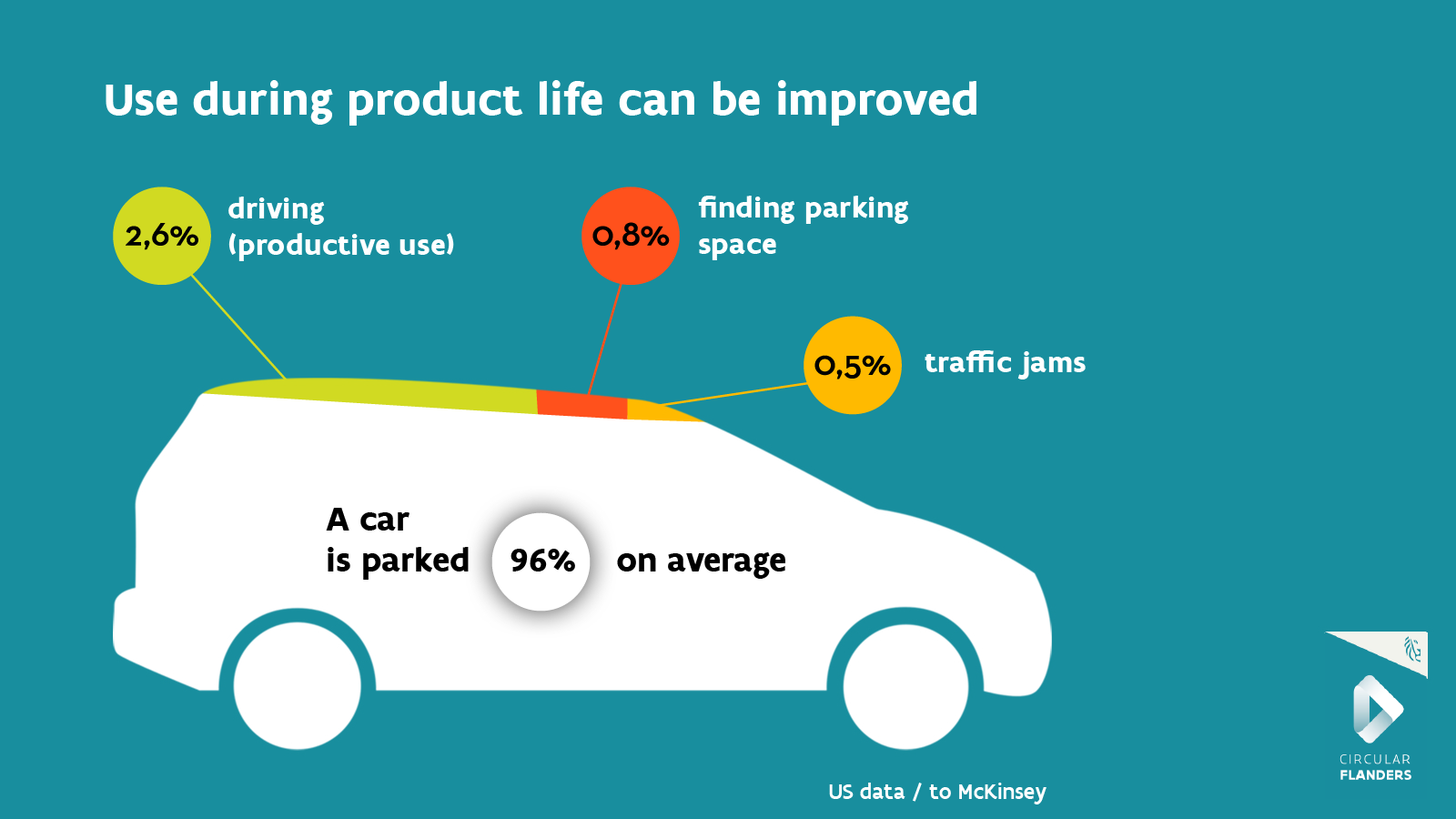
Product-service systems
Manufacturers change their revenue model
When manufacturers aim their products and revenue model towards this idea of use above ownership, we have product-service systems. Performance economy and functionality economy are synonyms. At the heart is the service around the product (the light, mobility, climate) and no longer the product (the lamp, the car, the heating installation). The focus shifts to the function of the product.
The manufacturer achieves turnover from selling the use of its product. The more robust it makes the products it offers as a service, the lower the maintenance costs it must pay, so the greater the profit left over. Result: in an ideal scenario, we get products that consume less material and last longer.
Certainty for the user
For their part, the user buys certainty. The user only pays for the result, not the product; if the product breaks, the manufacturer has to have it mended at its own expense. So, we have a maximal service, healthy customer relations, and no unpleasant surprises.
Similar interests
So, both parties have the same interests with product-service systems: a product that continues to work as well as possible for as long as possible. This is contrary to the linear economy where most manufacturers like to supply products that will soon have to be replaced.
















